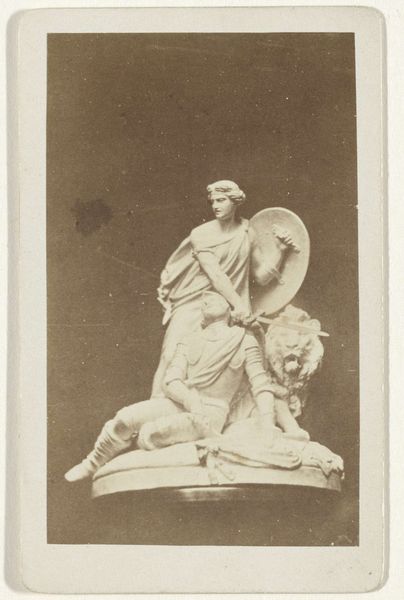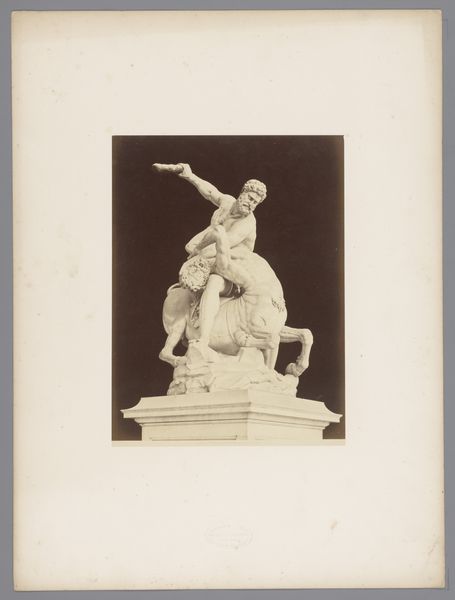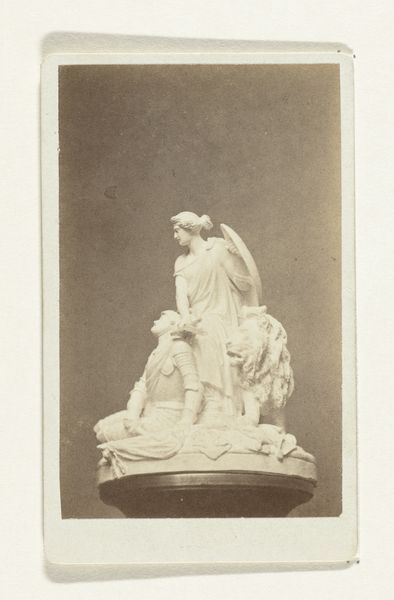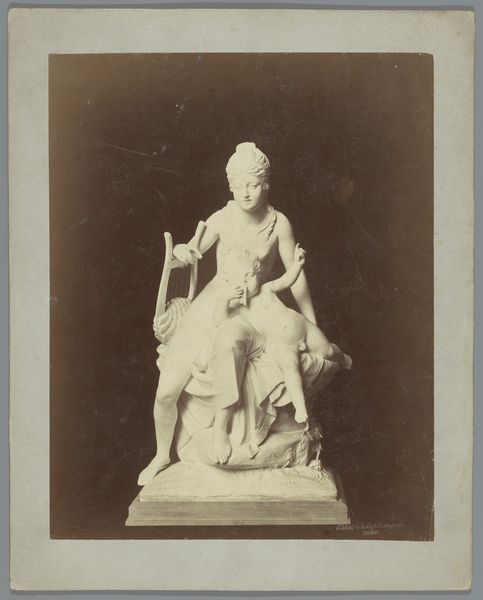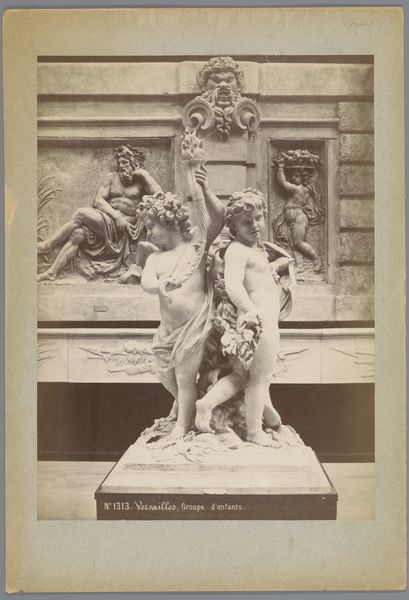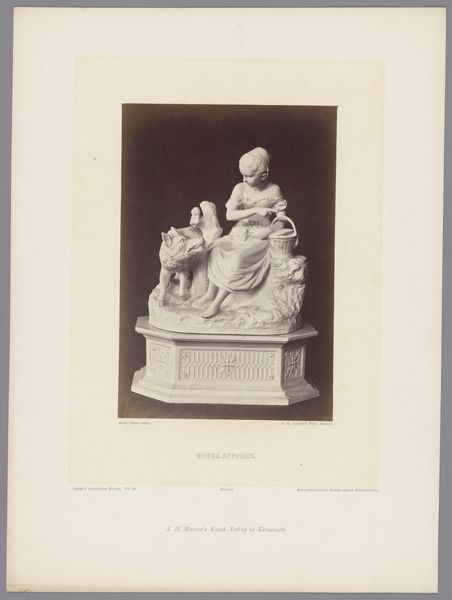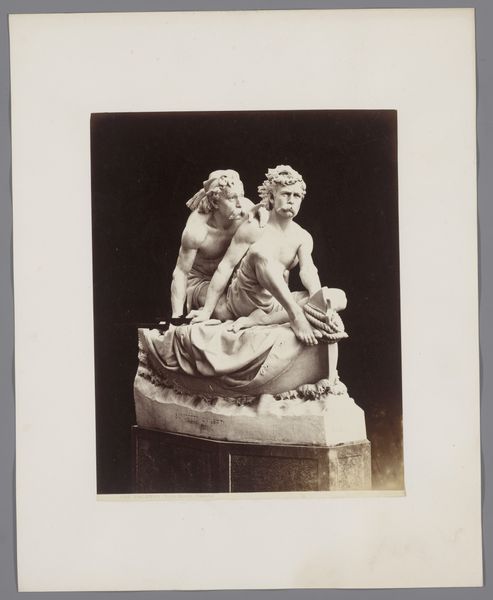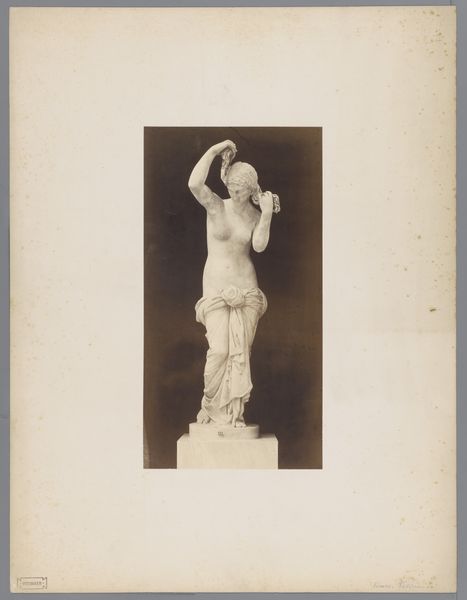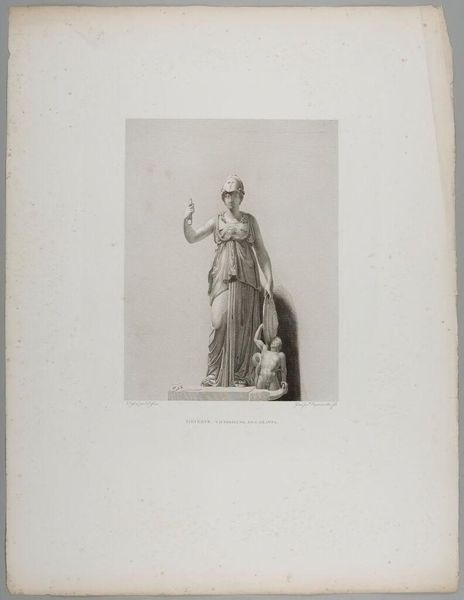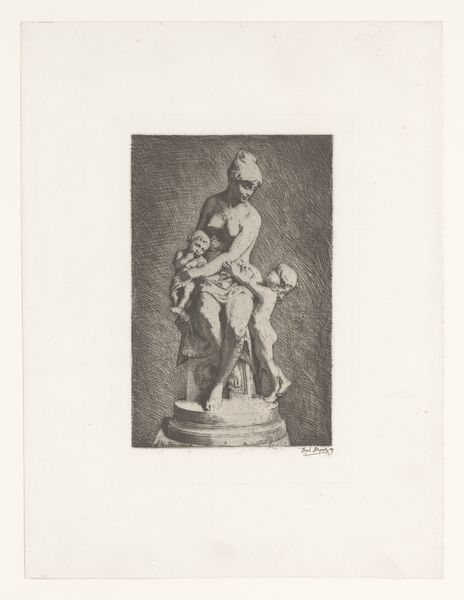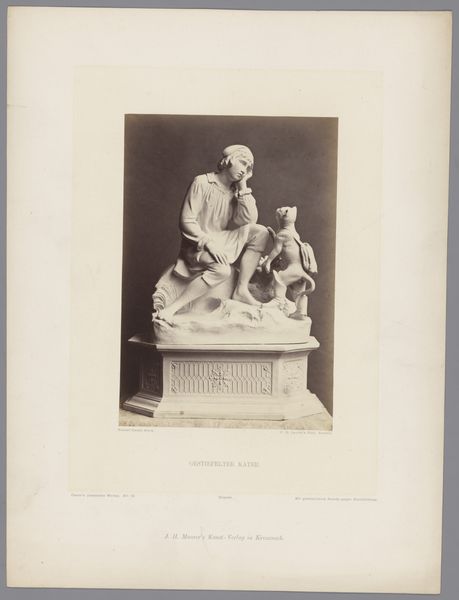
Model voor het monument ter herinnering aan de slag bij Heiligerlee, 1868 1868
0:00
0:00
photography, sculpture
#
portrait
#
statue
#
toned paper
#
16_19th-century
#
photography
#
sculpture
#
academic-art
#
realism
Dimensions: height 88 mm, width 55 mm
Copyright: Rijks Museum: Open Domain
Editor: This is Johannes Hinderikus Egenberger's "Model voor het monument ter herinnering aan de slag bij Heiligerlee, 1868," a photograph of a sculpture, surprisingly! It feels very classical in its subject matter. I'm curious about its relationship to the monument itself, what do you make of this photo? Curator: It's a fascinating artifact, isn't it? The photograph serves a very specific purpose in the late 19th century art world, as both documentation and advertisement. Consider the context: nationalist fervor is on the rise, and public monuments are tools for shaping collective memory and promoting specific narratives about the past. How does photographing the model contribute to this process? Editor: So the photograph is almost part of the monument’s propaganda machine, creating buzz? I hadn't thought of it that way! Does the choice of the lion have something to do with this too? Curator: Absolutely! The lion, a symbol of Dutch courage and resilience, is strategically deployed. This connects the monument directly to broader discourses of national identity. How does presenting a model versus the actual monument change its reception in your opinion? Editor: Interesting point, showcasing a model before the monument itself suggests a degree of control. It’s like test-driving an idea before fully committing. Almost like market research... Curator: Precisely! And photography, with its claim to objectivity, lends the project an air of legitimacy. So this photo is doing a lot of cultural work: circulating nationalist sentiments, promoting artistic skill, and pre-legitimizing the monument itself. Editor: This gives me so much food for thought! Thanks to that historic context, I see this picture as much more than just a piece of memorabilia. Curator: Indeed, art isn't created in a vacuum. When we start looking closely at that original historical setting, all kind of interesting insights can emerge.
Comments
No comments
Be the first to comment and join the conversation on the ultimate creative platform.
